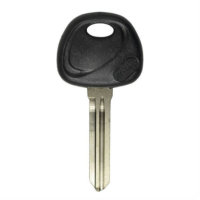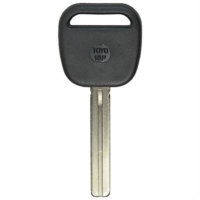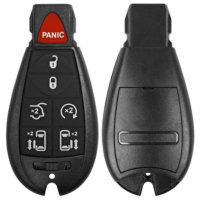The average consumer may not realize this, but there are quite a few different types of automotive keys out there. As with much of today’s world, the car key is ever-evolving as technology and products change.
When it comes to your car’s security, it can be important to understand the difference between the key types and how each one came to be.
When it comes time for locksmithing services for your car, it can be important – or at the very least helpful – to know what type of key your car has.
Below, our locksmith experts outline the different types of keys and how they’ve evolved, along with some important information for each type.
Traditional Keys:
Late 1940s:
Mechanical keys
have provided basic security to motor vehicles since their inception. Currently, there are a few types of mechanical keys commonly seen.
Remote Keys:
The next evolution in car keys allow users to remotely lock and unlock their vehicle. They also include additional functions such as remote unlocking of the trunk, providing a panic button on the remote, and remotely starting the vehicle.
Remotes come in a wide variety of shapes, sizes, frequencies and levels of security. Any Brothers Locksmith expert would be glad to answer any questions you have and help direct you toward the best remote key for your needs!
1980s:
VAT keys
were the first remote keys on the market. In the mid-1980s, General Motors began production on a new vehicle security system. In short, the new system made brute force attacks on the vehicle lock system less effective because the vehicles now also had an electronic “signature” that had to match what it expected to see when started.
VAT keys remained popular through the early 2000’s when General Motors completely switched over to the more effective RFID or transponder key system for the majority of its vehicles.
Early 2000s:
Transponder keys
combine a mechanical edge or sidewinder key with a small RFID chip or RFID emulation circuit. These keys help further deter brute force attacks on vehicle locking systems.
When the vehicles sense a transponder key enter the ignition or when the ignition is rotated, the ignition lock cylinder and the transponder key communicate with radio frequencies. This lets the vehicle computer know if the key trying to turn on the vehicle is an authorized key.
Since their inception, transponder keys have evolved to be widely popular and increasingly secure. If you’ve driven a car made in the early 2000s, you’ve probably used one of these.
When transponder keys are lost or broken, creating a new key can present a significant challenge. There are a wide array of different chips, technologies and security levels across the spectrum of transponder-equipped vehicles, and a great deal of training and technology are needed to create new copies. But don’t worry, our Pop-A-Lock technicians have you covered! Call us today and we can help you get any new key you need.
Today’s Keys
After decades of evolution, vehicle manufacturers continue to increase cars’ security. Today, there are two types of keys that provide the highest level of both security and convenience.
2000s:
Remote Head Keys
were the next step in the vehicle key evolution. As technology improved, manufacturers began to combine the mechanical key, the remote and often the transponder into a single unit. Most commonly-bought vehicles today use remote head keys, and they provide both additional security of the advanced key systems, as well as the convenience of conventional mechanical-only key systems.
Since then, a number of manufacturers – such as Nissan and Chrysler – have introduced key types that eliminated the need for the mechanical portion of the key entirely. Instead, the new keys have electronic-only access control for the vehicle. These are known as proximity keys.
As transponder identification efficiency and range continued to increase, manufactures were able to produce vehicles with proximity keys – AKA touchless or smart keys – for their vehicles. This latest key system simply requires that the fob or smart key be in proximity of the vehicle in order to gain access or start the vehicle.
This system provides a great deal of convenience to owners but resulted in a higher cost of replacement in the case of lost or stolen keys.
There are quite a few key types and systems out there, each of which requires different knowledge and training on how to duplicate or replace. Knowing what type of key your vehicle has can be useful information if and when you find yourself calling a locksmith.
No matter what type of key you have, Pop-A-Lock has your back!
Our technicians are trained and equipped to duplicate or replace virtually every make and model of vehicle key, and our prices are often deeply discounted from your what your local dealer can offer. Call us today to get a free quote!










